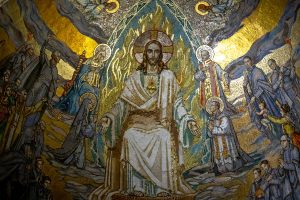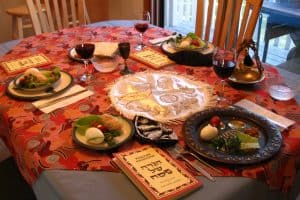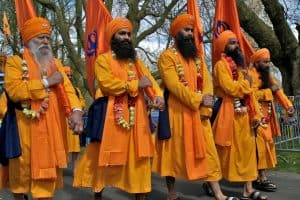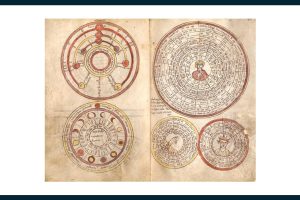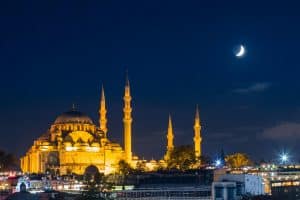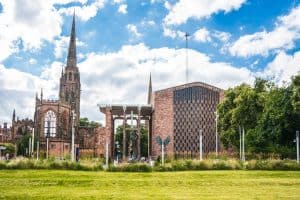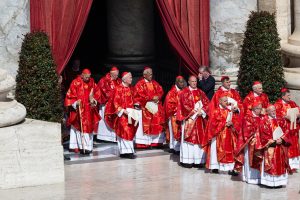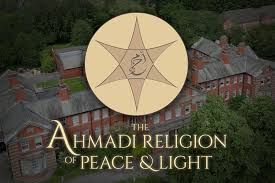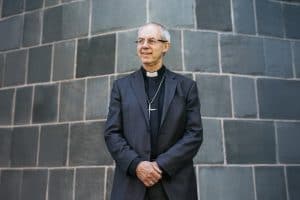Cathedrals are the main churches in each diocese in the Church of England, and its sister Anglican denominations in Wales, Scotland and Ireland. Although they are historically the seat of the diocesan bishop, they are run as places of worship, history, tourism and art by an independent cleric – the dean.
Thousands of people are expected to visit English cathedrals this Christmas for special services, carols and nativity plays.
Figures produced by the Church of England in the annual ‘Cathedral Statistics’ suggest that cathedrals continue to hold a special attraction in cities across the country.
Christmas services in 2018 attracted 133,000 people but the numbers attending for services throughout Advent, including carol services, concerts and nativity plays topped 617,000. Attendance for Easter services was 58,000, with the numbers attending services in Holy week reaching 95,000.
In total, almost 10 million people visited cathedrals in England in 2018, a rise of almost one million on the previous year, with one third paying as visitors. The rise could be explained by extra events for the World War One Armistice Day commemorations, and by special events laid onto attract visitors such as art, music and space displays.
But the number of people regularly worshipping in cathedrals is much lower – only 36,700 people per week, down by 300 on the previous year, with attendance split evenly between Sunday worship and midweek services.
What are cathedrals?
Cathedrals are the central churches in the dioceses or episcopal areas overseen by bishops. They are centres of learning, worship and Christian mission but also of the Anglican choral tradition, of living heritage and, even, tourism.
Within each cathedral is the cathedra, Latin for the seat of the bishop and from which these central churches get their name. However, bishops are not in charge of the cathedrals: they are run by the dean and chapter and the bishop gets to speak in the cathedral only when invited by them.
How are cathedrals run?
The dean is the senior priest of a cathedral, responsible, with the chapter, for running the institution. The chapter comprises the dean and residentiary canons, often with such titles as precentor, chancellor and treasurer. Residentiary canons, clergy appointed for cathedral ministry, may also be called prebendaries. This is sometimes called the greater chapter.
Cathedrals may also have minor canons, more junior clergy with roles such as chaplaincy. In the Church of England and Church in Wales, a cathedral may also have canons who have not been ordained, known as lay canons, or ecumenical canons, clergy appointed from other Christian denominations. Depending on the cathedral, these minor, lay and ecumenical canons may be part of a lesser chapter or combine with the others into a single chapter. The precise make-up of the chapter, and who has voting powers, is set out in each cathedral’s constitution and statutes.
A council and a college of canons may add to the governance of cathedrals. The council, chaired by a lay person appointed by the diocesan bishop in England, meets at least twice a year, when the bishop, although not a member, has the opportunity to address the members.
The college of canons comprises the dean, residentiary canons, suffragan bishops, archdeacons and other canons. It meets at least once a year. In the Church of England, it also has a role in electing a new bishop at the request of the Queen.
As centres of learning, cathedral chapters often include a theologian, ensuring a continuing study of God, the Bible and a spiritual view of issues affecting the church and society.
There have been recent failures of governance in cathedrals, with Exeter and Peterborough falling into financial difficulties. The Cathedrals Working Group, which reported in June 2018, suggested measures should be taken to avoid cathedrals being sold off to pay for debts, and that talks should start for state funding to ensure maintenance of the buildings.
What music is involved in the life of a cathedral?
The precentor has a leading role in the life of a cathedral as a centre of worship and is responsible for drawing together the liturgy, the words and music, in the many services held each week. Cathedrals may try new forms prayer and worship before they enter the mainstream.
Most cathedrals have a choir school and a range of choirs. This gives them a leading role in maintaining the long-standing choral tradition of the Anglican Church. They also benefit from employing many of the best organists and choir trainers in the country.
What about architecture?
When it comes to heritage, cathedrals, along with many churches, provide the largest group of listed buildings in the country. Because they are living, active buildings, with services every day and hosting many state, local authority, business, school and charity events, they are generally well looked after. Growing numbers of worshippers attend cathedrals, especially at the great festivals of Easter and Christmas.
The wide range of architectural styles on show in cathedrals attract many tourists, while numerous recitals and exhibitions add to the numbers visiting cathedrals each year. Two of the Church of England’s cathedrals, Canterbury and Durham, are World Heritage Sites. The Palace of Westminster, with Westminster Abbey and St Margaret’s Church, are also listed as World Heritage Sites.
How do cathedrals attract non-worshipping visitors?
In the summer of 2019, the installation of a helter-skelter in Norwich Cathedral, and a crazy golf game in Rochester Cathedral, gave rise to some criticism that cathedrals were resorting to gimmicks simply to bring in tourists. This has been robustly denied by deans, who say that for many people, this was the first time they had entered a cathedral and engaged in conversations on spiritual matters.
Other more sedate installations have been touring cathedrals this year, such as Gaia, a 23 foot replica of the earth by British artist Luke Jerram, which hung within the buildings alongside a sound composition by Dan Jones; the Knife Angel a sculpture of an angel made with knives confiscated by all 43 UK police forces toured several cathedrals; and a map of the moon, projected onto cathedral floors to mark the 40th anniversary of the moon landing was also featured in several cities.
This Christmas, as well as candles, choral music, The Messiah, nativity plays and carol services, Chester Cathedral has a tree made from 500 recycled plastic bottles and Sheffield Cathedral is illuminated in a unique sound and light experience.
How many cathedrals are there in England?
The Church of England has 42 dioceses, including the Dioceses of Sodor and Man and Europe. It has 42 Cathedrals in mainland England, plus Peel Cathedral on the Isle of Man and the Cathedral of the Holy Trinity in Gibraltar, the cathedral for the Church of England Diocese in Europe. Many people also think of Westminster Abbey as a cathedral, although it is actually a “royal peculiar”, belonging directly to the monarch and not to the C of E. The mainland Cathedrals are in:
Birmingham, Blackburn, Bradford, Bristol, Canterbury, Carlisle, Chelmsford, Chester, Chichester, Coventry, Derby, Durham, Ely, Exeter, Gloucester, Guildford, Hereford, Leicester, Lichfield, Lincoln, Liverpool, London (St Paul’s), Manchester, Newcastle, Norwich, Oxford (Christ Church), Peterborough, Portsmouth, Ripon, Rochester, Salisbury, Sheffield, Southwark, Southwell, St Albans, St Edmundsbury, Truro, Wakefield, Wells, Winchester, Worcester and York.
What about Scotland, Wales and Ireland?
The Scottish Episcopal Church has seven dioceses. Their cathedrals are in: Aberdeen, Dundee, Edinburgh, Glasgow, Inverness, Millport, Oban, and Perth.
In Scotland, the head of a cathedral of the Scottish Episcopal Church is the diocesan bishop. Each cathedral has its own statutes regarding the chapter and canons. The bishop appoints a provost as the incumbent, senior priest, of the cathedral. The bishop can also be the provost and can use the cathedral for episcopal acts and diocesan functions, so long as they do not interfere with worship.
While the Church of Ireland has 12 dioceses, it has 30 cathedrals. They are in:
Province of Armagh: Armagh, Belfast, Clogher, Derry, Downpatrick, Dromore, Enniskillen, Killala, Kilmore, Lisburn, Raphoe, Sligo and Tuam.
Province of Dublin: Cashel, Clonfert, Cloyne, Cork, Dublin (Holy Trinity), Dublin (St Patrick), Ferns, Kildare, Kilfenora, Kilkenny, Killaloe, Leighlin, Limerick, Lismore, Rosscarbery, Trim, and Waterford.
In the Church of Ireland, the bishop appoints the dean and chapter in the numbers and roles according to tradition. Membership of the chapter can be changed only by a vote in the diocesan synod, approved by the general synod of the Church of Ireland.
The Church in Wales has six dioceses. Their cathedrals are in: Bangor, Brecon, Llandaff, Newport, St Asaph, and St David’s.
Deans and other officers of cathedrals in the Church in Wales are appointed by the diocesan bishop. A canon may be a lay person or cleric appointed in accordance with the cathedral scheme or its constitution and regulations, whichever is in force at the time, while a prebendary must be an ordained cleric.
Useful contacts
The Association of English Cathedrals – chairman is the Dean of Lichfield Adrian Dorber, executive director Sarah King
Becky Clark, director of Churches and Cathedrals for the Archbishops’ Council of the Church of England
Choir Schools’ Association




